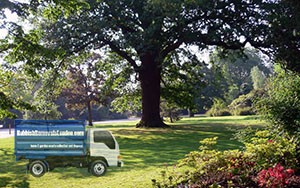For years now London has been the greenest city in Europe of its size. No other major capital or town of equal or near proportions has better environment protection policies, more adequate rubbish collection and disposal strategies and the sheer will of local councils to enter the 21st century with the sense of responsibility towards nature than London.
 There are many studies that come to back up those claims. The first one was conducted in 2013 under the commission of City of London Corporation, but many more followed with the same results – London is on the top of the list in Europe and is one of the three most environment responsible cities in the world as a whole.
There are many studies that come to back up those claims. The first one was conducted in 2013 under the commission of City of London Corporation, but many more followed with the same results – London is on the top of the list in Europe and is one of the three most environment responsible cities in the world as a whole.
Some of the reasons London is way ahead of the other European cities of its dimensions have already been mentioned in the first paragraph. One that went unsaid is the fact that indeed London is literally the greenest of them all. According to the most recent estimates the capital of Britain has over 35 000 acres of open spaces and parks, woodlands and public gardens. This is an astonishing number that was certainly double and triple-checked by the conductors of the survey, because the numbers show over 40% of the territory of the metropolis is actually covered by publically accessible open green spaces. If you want to imagine better how big this is, consider the fact that the second European city on the list – the capital of Germany Berlin, can boast only mere 14.4 % of open green surface area.
But why are public green spaces so important? Well, for one thing they have very positive effect on the fight against climate change. They absorb pollution from the atmosphere, reduce flooding and generally improve the quality of the air that residents and visitors to London breathe.
The presence of open green spaces in London is important not only because of environmental reasons however. Recent studies show that people’s productivity increases if they have access to green areas like parks and gardens, which definitely leads to economic benefits for the city as a whole.
Parks and woodlands are major tourist attractions that boost significantly local economies, which is one practical reason more why keeping the quantity of such spaces in London would be not only good, but also rather advisable. For example, only the parks and spaces that are managed by the City of London Corporation have estimated 23 million visitors for the 2012/2013 period. You do the math.
What does all of that mean? London is by far one of the most important financial and commercial centers in the world. It is also one of the biggest cities currently in existence. In general terms the presence of so many and so large open green spaces in the capital however also means that it is also one of the best place to live in the world. A fact that you should be pretty happy about in case you are based here.

